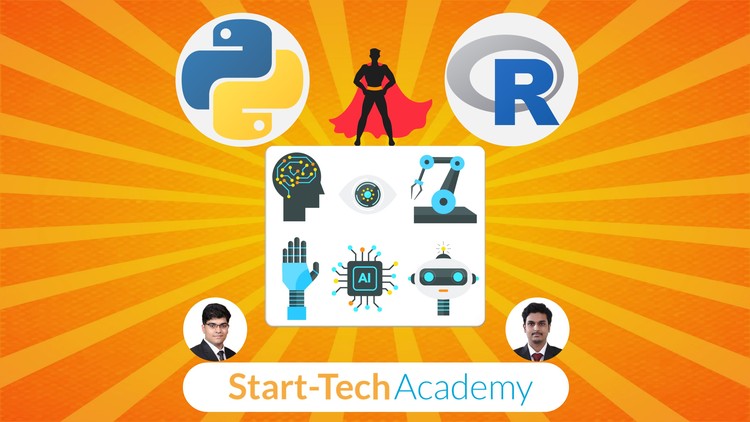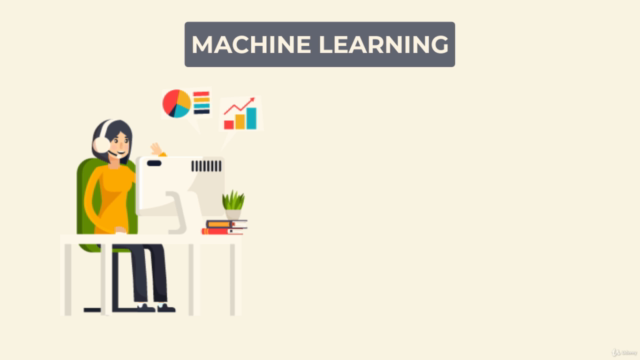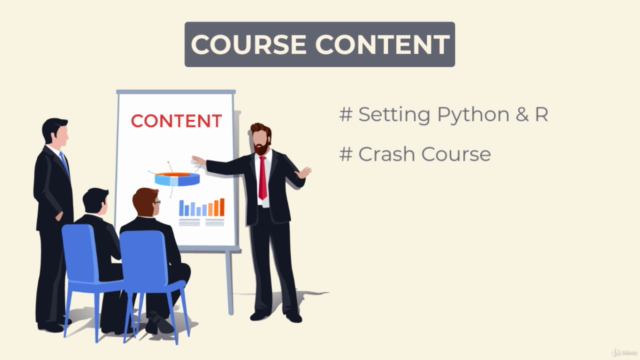Machine Learning & Deep Learning in Python & R

Why take this course?
您提供的信息涵盖了机器学习(ML)和人工智能(AI)的基础知识,以及在Python和R两种编程语言中实现这些技术的方法。让我们进一步讨论您提到的每个点:
-
什么是机器学习?
- 机器学习是一个领域,它使计算机能够从数据中学习,识别模式,并做出决策,而无需或仅需最小的人工干预。它是人工智能的一个分支,基于系统可以从经验中学习和改进其行为。
-
为什么使用Python进行机器学习?
- Python在数据科学领域非常流行,因为它具有丰富的库和框架,如NumPy、Pandas、Matplotlib、Scikit-learn、TensorFlow和Keras等,这些都是进行数据分析和机器学习的强大工具。此外,Python的代码通常简洁易读,对于初学者来说,学习起来更加容易。
-
为什么使用R进行机器学�earing?
- R是统计分析和数据可视化方面的强大工具,它有着丰富的包生态系统(例如ggplot2、dplyr、caret等),这些包对于统计学习和机器学习任务非常有用。R在许多顶级科技公司、金融机构、研究实验室以及大学中被广泛使用。
-
数据挖掘、机器学习和深度学习的区别?
- 数据挖掘通常指的是从大量数据中发现新知识和模式的过程,这些模式可能已经被人类识别出来。它侧重于数据探索和模型构建。
- 机器学习则是使用并行化的算法从数据中学习信息,并将该信息应用于新的数据集、决策或动作。它涉及更多的预测和模式识别。
- 深度学习是机器学习的一个子领域,它使用复杂的神经网络结构来处理大量数据,以识别和学习复杂的模式,如自然语言处理和图像识别。它需要大量的计算资源和数据来训练模型。
在Python和R中进行机器学习时,您可以使用多种库和框架来实现不同类型的学习任务,包括监督学习、非监督学习、强化学习等。这些工具和技术正在不断发展,为数据科学家提供了更多的可能性和创新空间。
如果您对特定的机器学习概念(如回归分析、时间序列分析、模型评估等)有任何疑问,或者对某个特定库(如TensorFlow、Keras、Scikit-learn、caret等)的使用有具体问题,我可以提供进一步的帮助和解释。
Course Gallery




Loading charts...
Comidoc Review
Our Verdict
Although there are areas for improvement, such as clarifying certain theoretical aspects and addressing library compatibility issues, this machine learning and deep learning course in Python and R provides a strong foundation with extensive model coverage. Perfect for both novice learners looking to gain hands-on experience and seasoned practitioners aiming to bolster their understanding of ML methodologies.
What We Liked
- Comprehensive coverage of both Python and R for machine learning and deep learning
- In-depth explanations of various models such as regression, decision trees, SVMs, neural networks, and CNNs
- Strong focus on real-life problem solving and converting business problems into machine learning problems
- Well-structured course with clear instructions and good balance between theory and coding exercises
Potential Drawbacks
- Some users reported issues with the latest Python library versions and a stronger preference for Python over R
- A few users mentioned the lack of clarity regarding column selection for the X variable and suggested including clustering methods
- Minor concerns about PPT usage during theory classes and manipulative teaching style from one instructor
- Occasionally lengthy coding sessions without proper explanation can make it challenging for beginners